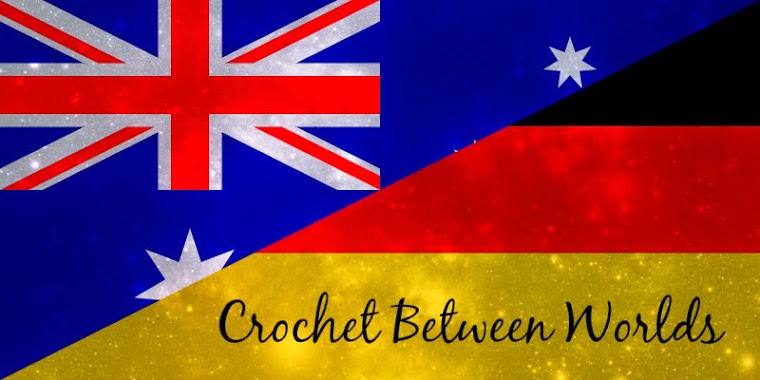The Ravelry pattern page can be found here: http://www.ravelry.com/patterns/library/fridas-flowers-blanket
We are working the CAL along with you all (in the Classique Cotton, provided by the wonderful Stylecraft team), and will post our tips and tricks for each part at the same time as the pattern is published over at the Stylecraft website. If you have any questions or need help, there are Facebook groups (English: https://www.facebook.com/groups/1555519964767343/ , German: https://www.facebook.com/groups/1039765272753087/ and Dutch:https://www.facebook.com/groups/145851979128898/ ),
and you are always welcome to leave a comment here or ask us on Facebook.
As you know, Anne is doing the German translations for the CAL, so ask away in German too!
So, Block 7 - Frida's Bouquet:
 |
| Front |
 |
| Back |
Yarn usage:
22g Sunflower (41m)
7g Plum (13m)
11g Poppy (20m)
9g Shrimp (17m)
14g Teal (26m)
22g Leaf (41m)
29g Ivory (53m)
40g Black (74m)
2g Greek Blue (4m)
Remember: We are using the Classique Cotton, so use the meterage above if you are making Frida in another DK yarn.
Here's a little spreadsheet tool that Michelle is using to track yarn usage - just enter your start and finish weights for your yarns, and then the weight and meterage used will be automatically calculated!
A little note on yarn usage - for the border, you will need almost a full ball of Black, half a ball of Poppy and half a ball of Shrimp. If you haven't joined your hexagons yet, keep in mind that you can use other colours to join and create a gorgeous design on the back of your Frida as well!
Our Top Tips for the Frida's Bouquet block:
1. In Row 5, when you need to work 1sc, 5ch, 1sc into the turning chain at the tip of the leaf, just work into the front loop! It's much easier, and looks the same in the end.
2. In Row 6, the central sc of the 3sc group that you need to work into is the one between the leaves.
3. Bullion stitches again! I wrapped the yarn around my hook 4 times instead of 5 for these smaller bullions that are closer together.
See last week's photo tutorial if you need a bit of help with these stitches!
You should be able to hide the ends fairly neatly underneath Row 1 :)
For our tips from previous weeks, visit:
Block 1: http://crochetbetweentwoworlds.blogspot.com.au/2016/04/fridas-flowers-cal-block-1-white-cosmos.html
Block 2: http://crochetbetweentwoworlds.blogspot.com.au/2016/04/fridas-flowers-cal-block-2-dahlia-bud.html
Block 3: http://crochetbetweentwoworlds.blogspot.com.au/2016/05/fridas-flowers-cal-block-3-bird-of.html
Block 5: http://crochetbetweentwoworlds.blogspot.com.au/2016/05/fridas-flowers-cal-block-5-heart-rose.html
Block 6: http://crochetbetweentwoworlds.blogspot.com/2016/06/fridas-flowers-cal-block-6-ring-of-roses.html
We're nearly there! Next time we will be finishing any joining not done yet (I left mine until the very end), and then the gorgeously simple border.
Happy hooking! Don't hesitate to comment, visit a Facebook group or ask Anne or Michelle on Facebook if you need any help :D












